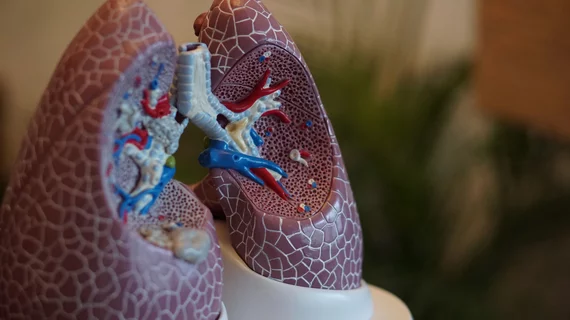Ultrasound technique offers cheaper alternative to CT for quantifying lung health assessments
Researchers with two North Carolina institutions have developed a new ultrasound technique to assess lung scarring and fluid buildup, which they say offers a cheaper and noninvasive alternative to CT.
They’ve already tested out the method on rats, demonstrating early success in quantifying pulmonary fibrosis and edema. Now, they’re working to launch an investigation focused on the latter in humans, North Carolina State University announced on Thursday.
If successful, the technique could prove powerful, helping to limit radiation exposure to patients from CT and save costs, without the help of a trained radiologist.
“Ultrasound is a good solution because it does not pose a cancer risk, it’s portable, it’s relatively inexpensive, and our technique effectively gives users a quantitative assessment of the fibrosis,” Marie Muller, PhD, co-investigator and an associate professor of mechanical and aerospace engineering at NC State, said in a statement.
She and colleagues at the University of North Carolina have received a grant from the National Institutes of Health to fuel their work. Their method directs multiple ultrasound waves at the lung tissue, collecting data that helps determine the density of healthy alveoli. It’s then used to provide a quantitative assessment of the amount of fibrosis in the tissue and may eventually also help to pinpoint fluid in the organ, experts noted.
Previous approaches to assessing lung health via US could only give qualitative assessments, such as “good” or “bad,” but this new technique would allow for measurable gradients, Muller noted. The method does not produce images, rather, the output is a number, researchers said.
“The automated quantitative assessment would allow the technology to be used by personnel with minimal training and would allow healthcare providers to compare data across time,” she added. “For example, caregivers would be able to tell if a patient’s edema is getting better or worse.”
You can read more about the initial study in a rodent cohort of patients here.

